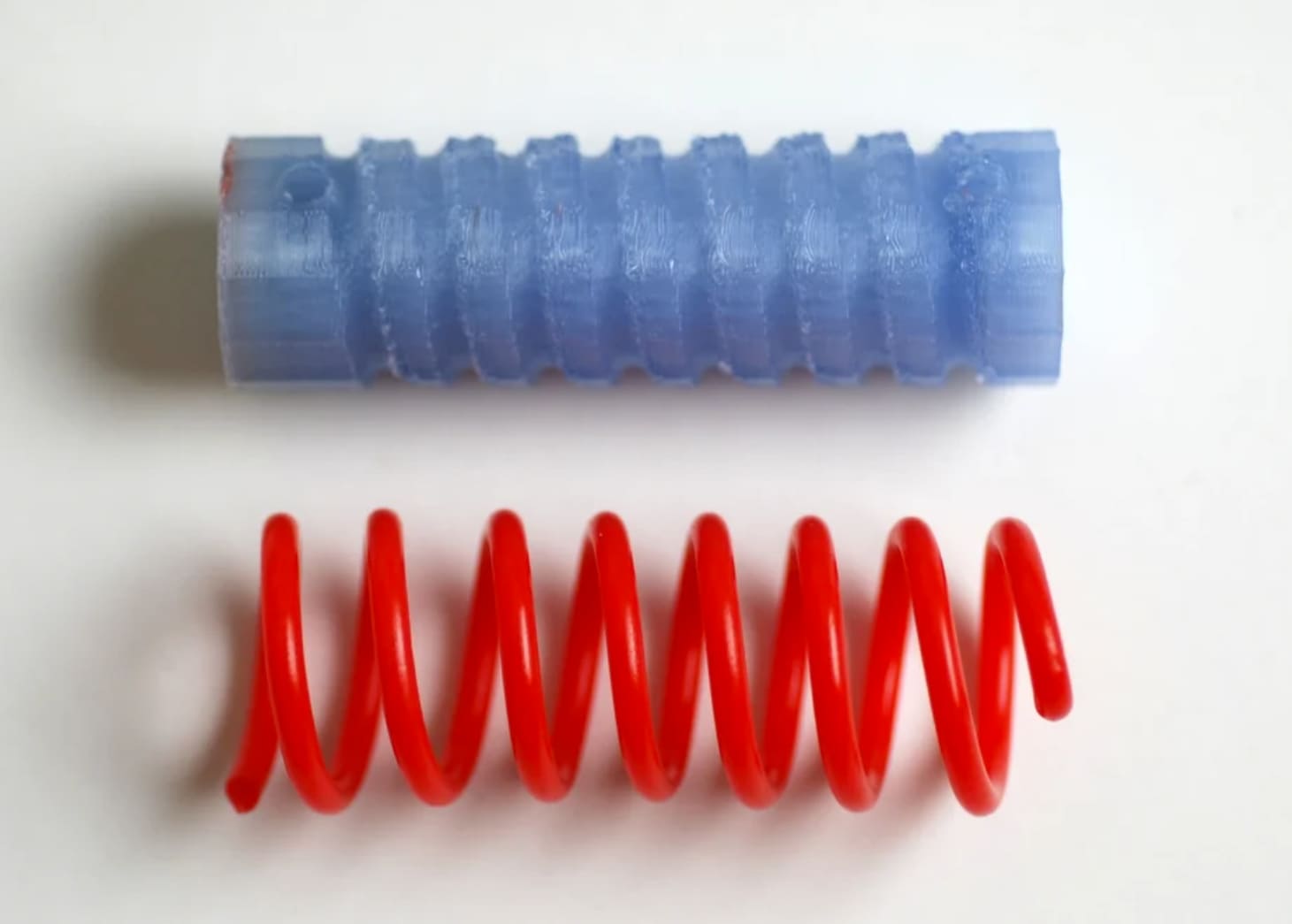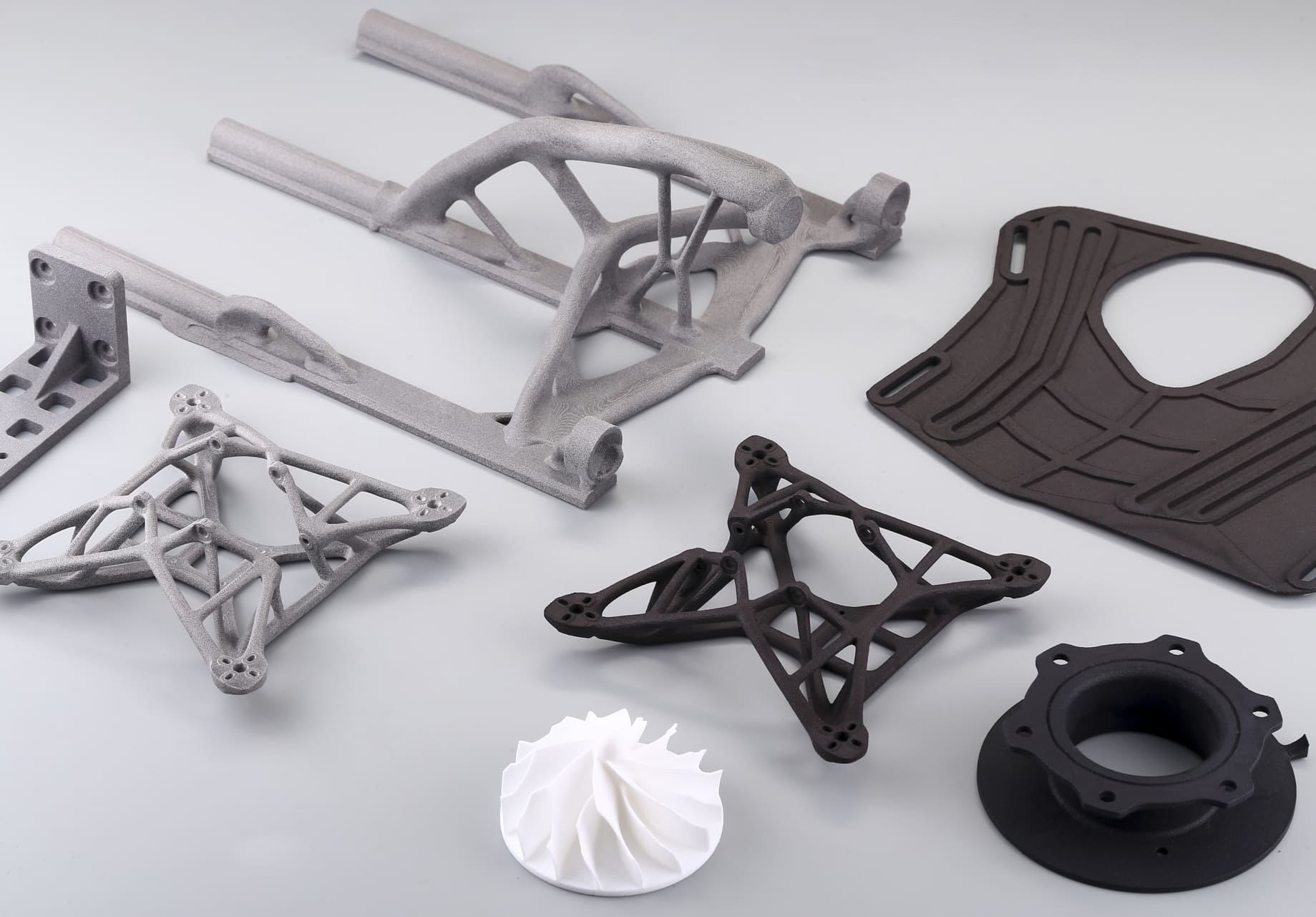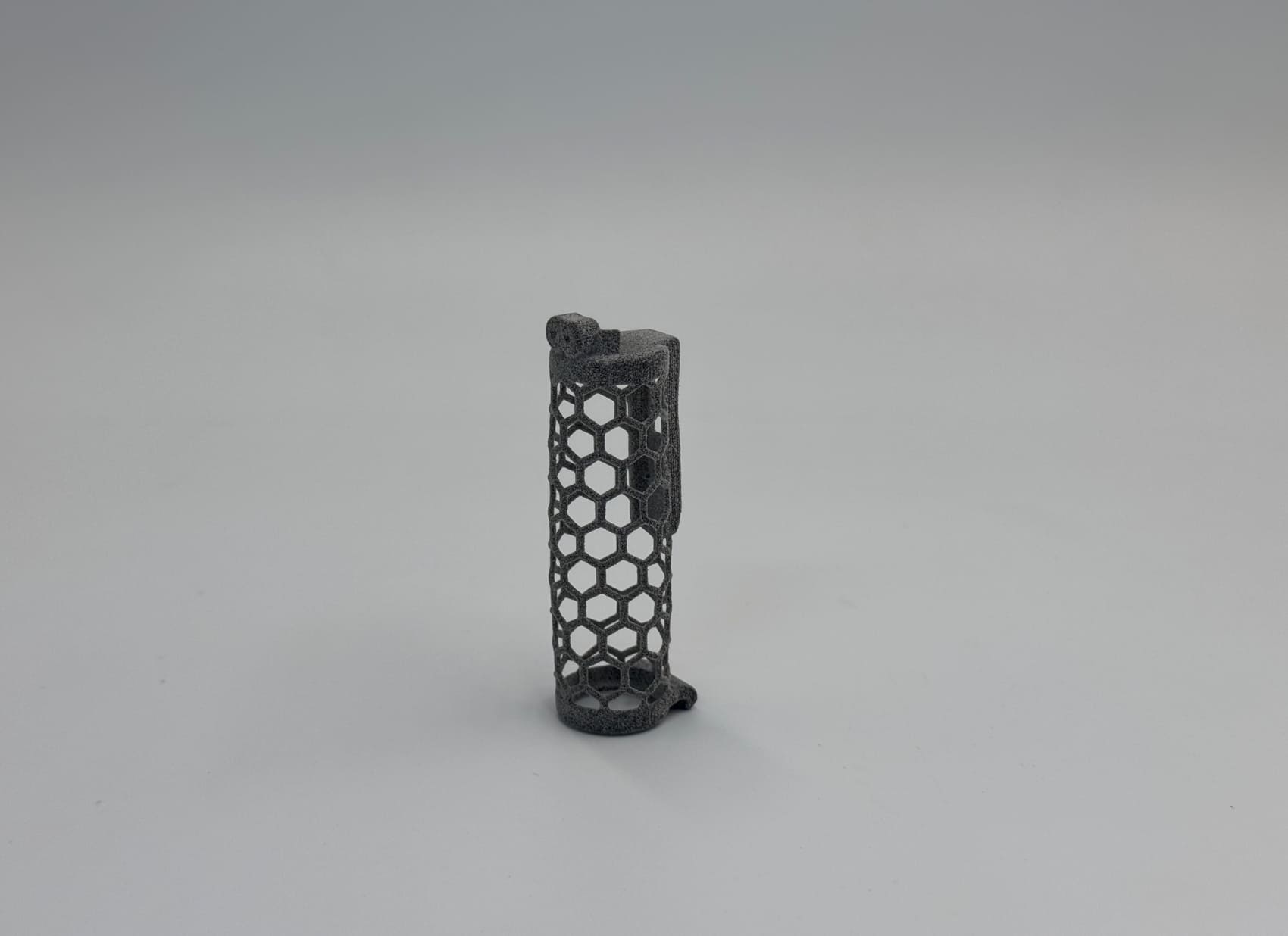Springs are mechanical devices that store and release energy when a force is applied. They come in various shapes and designs. Here is a quick guide to solutions for spring 3D print.

3D Printed Compression Spring
Image Source: mdedm from Tingiverse
Types of Springs
1. Compression Springs
Compression springs are open-coil springs that resist compressive forces. When the spring is compressed, it pushes back to return to its original length, making it ideal for applications such as shock absorbers and battery contacts.
2. Tension (Extension) Springs
Tension springs are designed to resist extension forces. They have hooks or loops on each end and are used in applications where the spring needs to return to its original shape after being pulled apart, such as trampolines and garage doors.
3. Torsion Springs
Torsion springs work by twisting rather than compressing or extending. They store rotational energy and are commonly used in applications such as clothespins, mousetraps and vehicle suspension systems.
4. Leaf Springs
Leaf springs consist of a stack of curved flat plates and are commonly used in vehicle suspension systems. They provide a damping effect and help support the weight of the vehicle.
5. Constant Force Springs
Constant force springs are made from rolled metal strips and apply a constant force throughout their range of motion. They are used in applications such as retractable pens and measuring tapes.
6. Belleville (Disc) Springs
Disc springs are conical springs with a small size and high load capacity. They are used in applications where space is limited, such as clutches and valves.
Design Guidelines for 3D Printing Springs
Material Selection
Choose a material that offers the required flexibility and strength. Common choices include flexible filaments for FDM printers or specialized resins for SLA printers.
Spring Geometry
The shape and size of the spring must be carefully designed. Consider parameters such as coil diameter, wire diameter, number of coils, and coil spacing. These factors affect the stiffness and load-carrying capacity of the spring.
Wall Thickness
Make sure the spring walls are thick enough to provide the necessary strength but not so thick that they become inflexible. Typically, a minimum wall thickness of 1-2 mm is recommended for most 3D printing materials.
Orientation and Support
When setting up your print, consider the orientation of the springs on the build platform. Orienting the spring along its axis minimizes the need for support structures and improves print quality. Use supports judiciously to prevent deformation during printing.
Layer Height and Print Speed
Choose a smaller layer height for better resolution and a smoother surface finish. Slower printing speeds help maintain accuracy and prevent defects. Fine-tuning these settings can improve the overall performance of your printed spring.
Post-Processing
After printing, carefully remove all support structures to avoid damaging the springs. Depending on the material and printing method used, post-processing steps such as annealing or curing may be necessary to enhance the mechanical properties of the spring.
Try Different Materials and 3D Printing Methods
Experimenting with different materials and 3D printing methods can significantly enhance the functionality and performance of printed springs.
Flexible filaments, such as TPU and TPE, are well suited to FDM printers, providing the necessary elasticity. Resin-based materials used in SLA and DLP printing offer high precision and excellent mechanical properties, while metal printing technologies such as SLM can create strong springs for demanding applications.
Multi-material printing can combine the properties of different materials, thereby enhancing versatility.






















